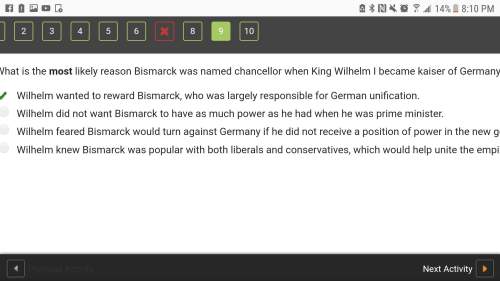
Mathematics, 21.03.2020 02:00, isabelvaldez123
If you've gotten this far, you should know how to: Start at a point with a basis of variables that are 0, forming the pivot columns of a row reduced matrix. Determine whether exchanging one of those basis variables will increase or decrease the object function. Exchange a basis variable in order to increase the objective unction and put the equations into row reduced echelon form with respect to the new basis. The simplex algorithm is to continue in this manner, always performing basis exchanges which improve the objective function, until no more exchanges are possible. We conclude with an example: Buzz Buzz Buzz Coffee has on hand 1 kg of coffee grounds, 1 gallon of milk and 10 cups of sugar They can use these to make espressos, containing 8 grams of grounds and no milk or sugar: lattes, containing 15 grams of grounds, 0.0625 gallons of milk and 0.125 cups of sugar: or cafe cubano containing 7.5 grams of grounds, no milk and 0.125 cups of sugar. They will be able to sell all they produce, which they will sell at prices of $2 for espressos, $4 for lattes and $5 for a cafe cubano. Let e, l and c be the number of espressos, lattes and cafes cubanos manufactured, and let g, m and s be the amounts of grounds, milk and sugar left over when they are done. Let p be the amount of money they take in. Record the linear equations relating e, l, c, g, m, s and p. Start at the point where no drinks are made (so e = l = c = 0). Exchange one of these variables, in order to increase p. Repeat the process of exchanging a basis variable to increase p until there are no exchanges which will make p larger. How many of each drink should be made?

Answers: 2
Other questions on the subject: Mathematics

Mathematics, 21.06.2019 17:00, emmaline11
Acertain population of bacteria demonstrates exponential growth doubles in size every 4 days. how long will it take the population to triple in size?
Answers: 1

Mathematics, 22.06.2019 00:30, trinitymarielouis
Kevin has a spinner that has 10 equal sections and 2 sections of each color—red, blue, green, yellow, and purple. kevin spins the spinner 180 times. kevin determines about how many times the spinner will land on red or green, and his work is shown below. -kevin has the formula reversed; it should be the total number of sections over the number of red or green sections. -kevin should have used a 4 in the numerator because there are 2 red sections and 2 green sections. -kevin should multiply by the number of sections in the spinner rather than the total number of spins. -kevin calculated the prediction correctly and did not make any mistakes.
Answers: 1

Mathematics, 22.06.2019 01:10, abadir2008
Given: ae ≅ ce ; de ≅ be prove: abcd is a parallelogram. we have that ab || dc. by a similar argument used to prove that △aeb ≅ △ced, we can show that △ ≅ △ceb by. so, ∠cad ≅ ∠ by cpctc. therefore, ad || bc by the converse of the theorem. since both pair of opposite sides are parallel, quadrilateral abcd is a parallelogram.
Answers: 3

Mathematics, 22.06.2019 01:30, exoticbunnylover123
If a sprinkler waters 1 over 12 of a lawn in 1 over 2 hour, how much time will it take to water the entire lawn? (5 points) 10 hours 6 hours 1 over 6 hour 7 over 12 hour
Answers: 1
Do you know the correct answer?
If you've gotten this far, you should know how to: Start at a point with a basis of variables that a...
Questions in other subjects:


Health, 16.10.2019 18:10


Social Studies, 16.10.2019 18:10


Mathematics, 16.10.2019 18:10



Mathematics, 16.10.2019 18:10

History, 16.10.2019 18:10







